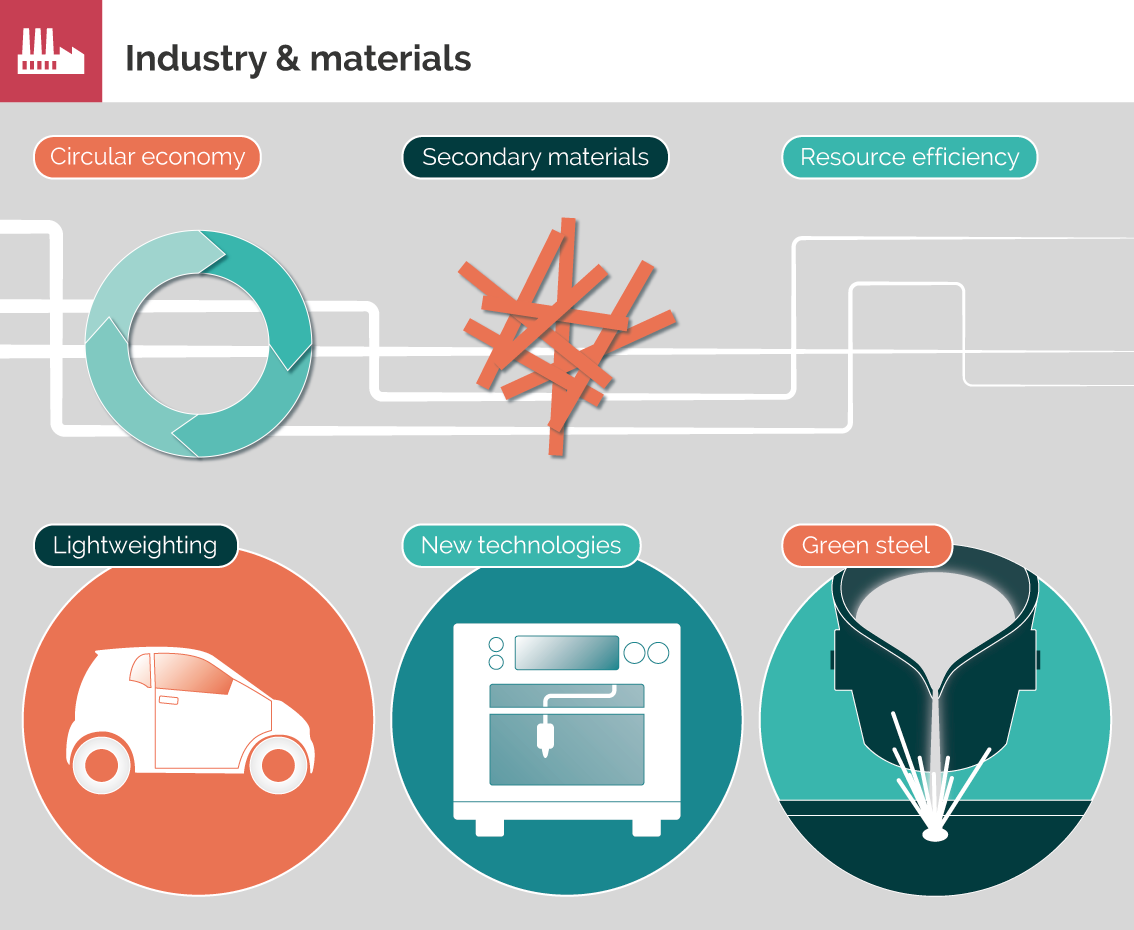
Delivering net-zero in industry will require a combination of improved material efficiency, energy efficiency improvement and new zero-carbon industrial processes. In the short term, materials efficiency has the greatest potential, with new processes contributing more towards 2050.
Over the 25-year period 1995-2015, more than 40% of the reduction in UK industrial energy demand was achieved by outsourcing of manufacturing. Offshoring is not a sustainable strategy if the UK is to achieve its stated goals in maintaining industrial capacity and resilient supply chains. However, improved efficiency has remained the main contributor to falling industrial energy use [1].
It is possible to reduce industrial energy demand the UK by 24% by 2050 compared to 2020 levels [2, 3]. This will need a comprehensive strategy involving social change, fuel switching and the development of new technologies to address key industrial processes. The majority of these changes come from changes in the way we use materials and products, with a more limited role for further energy efficiency improvements in existing processes. From detailed system sectoral studies of food [4] and steel [5], it is clear that that net-zero compatible industrial energy systems cannot be achieved without demand-side action.
A comprehensive material consumption strategy is therefore needed including improvements in production processes, use of secondary materials, light weighting of products and innovative business models. It also needs to change existing material consumption patterns, where they are not circular [6].
The construction sector accounts for 50% of material use in the UK and relies on materials whose production has limited short-term mitigation potential, in particular steel and cement. Construction is therefore the most important sector for resource efficiency improvement [7]. These energy and carbon costs need to be taken into account in large infrastructure projects.
In the steel sector, our research shows that retrofit options have the most short-term mitigation potential [5], whilst the most likely option for complete decarbonisation is a combination of hydrogen direct reduction of iron and electric arc furnaces, which has lower carbon emissions and costs than carbon capture and storage-based options [8]. This would already be a lower cost option than blast furnace relining if steel producers were exposed to the full cost of their carbon emissions [9]. Some reductions in process energy use, in steel and other sectors, could be achieved through the use of high-temperature heat pumps [10]. Even longer-term options need short term attention and policy support to develop and demonstrate them. Increased scrap use in steelmaking potentially allows greater use of electric arc furnaces, but requires better quantification of its benefits and process options.
Evidence
- Untangling the drivers of energy reduction in the UK productive sectors: Efficiency or offshoring? | Research paper, 2018
- Energy demand reduction options for meeting national zero-emission targets in the United Kingdom | Research paper, 2022
- The role of energy demand reduction in achieving net-zero in the UK: Materials and products | CREDS report, 2021
- Towards net-zero nutrition: the contribution of demand-side change to mitigating UK food emissions | Research paper, 2021
- Technology and material efficiency scenarios for net-zero emissions in the UK steel sector | Research paper, 2022
- Industrial decarbonisation policies for a UK net-zero target | CREDS report, 2020
- Aligning carbon targets for construction with (inter)national climate change mitigation commitments | Research paper, 2018
- Energy system requirements of fossil-free steelmaking using hydrogen direct reduction | Research paper, 2021
- Policy and pricing barriers to steel industry decarbonisation: A UK case study | Research paper, 2022
- Reducing industrial hydrogen demand through preheating with very high temperature heat pumps | Research paper, 2023
Banner photo credit: Pat Whelen on Unsplash
